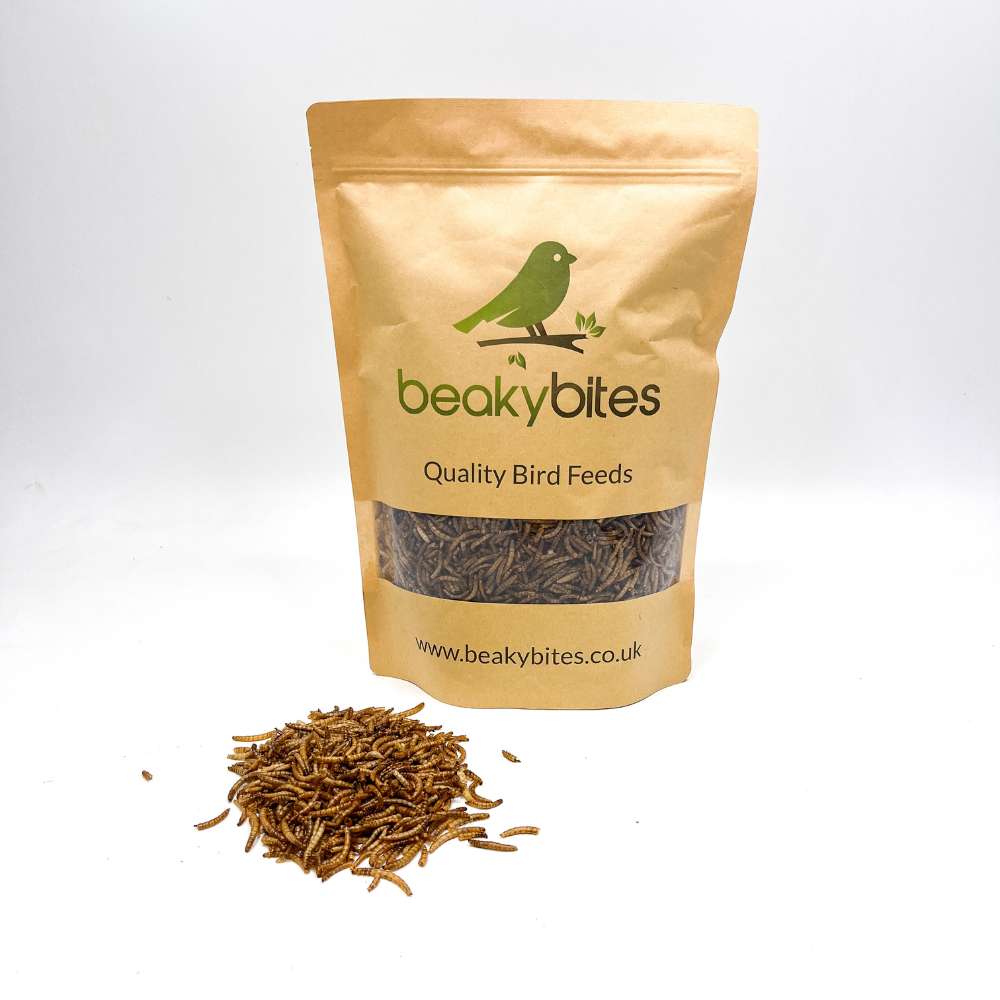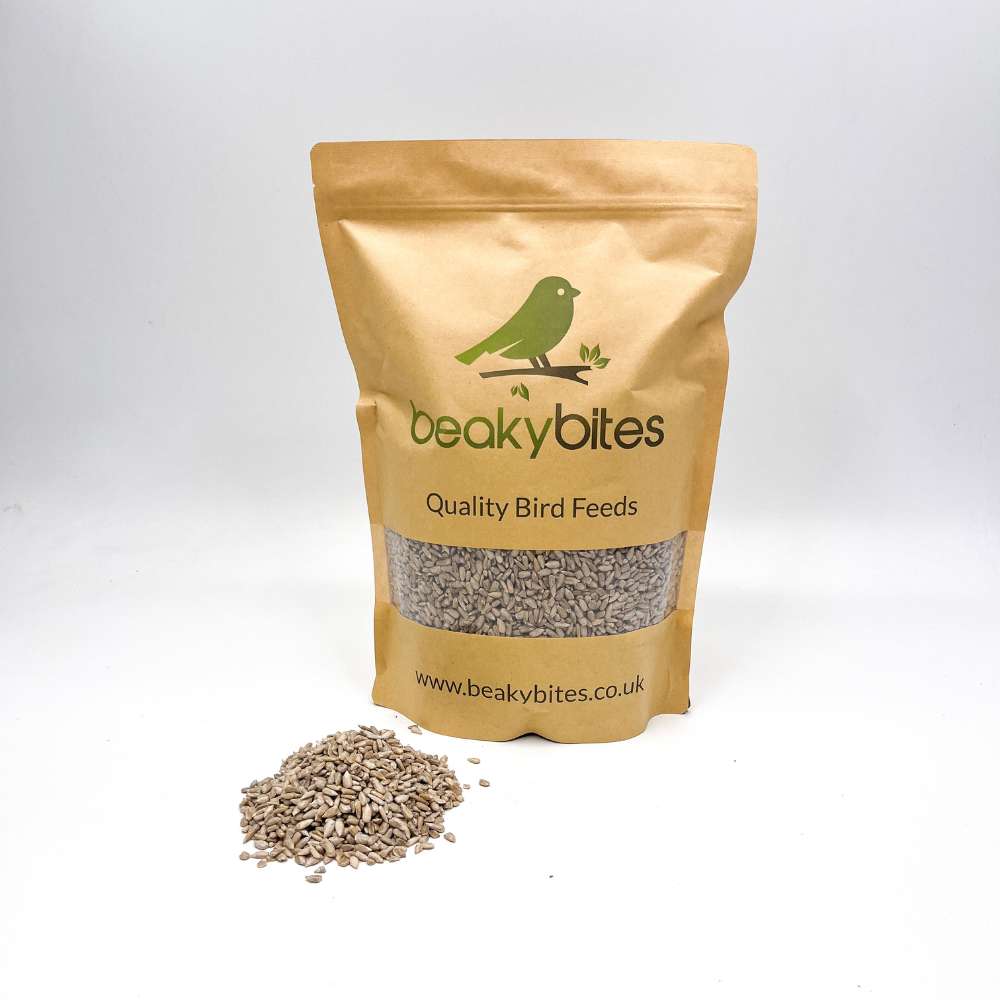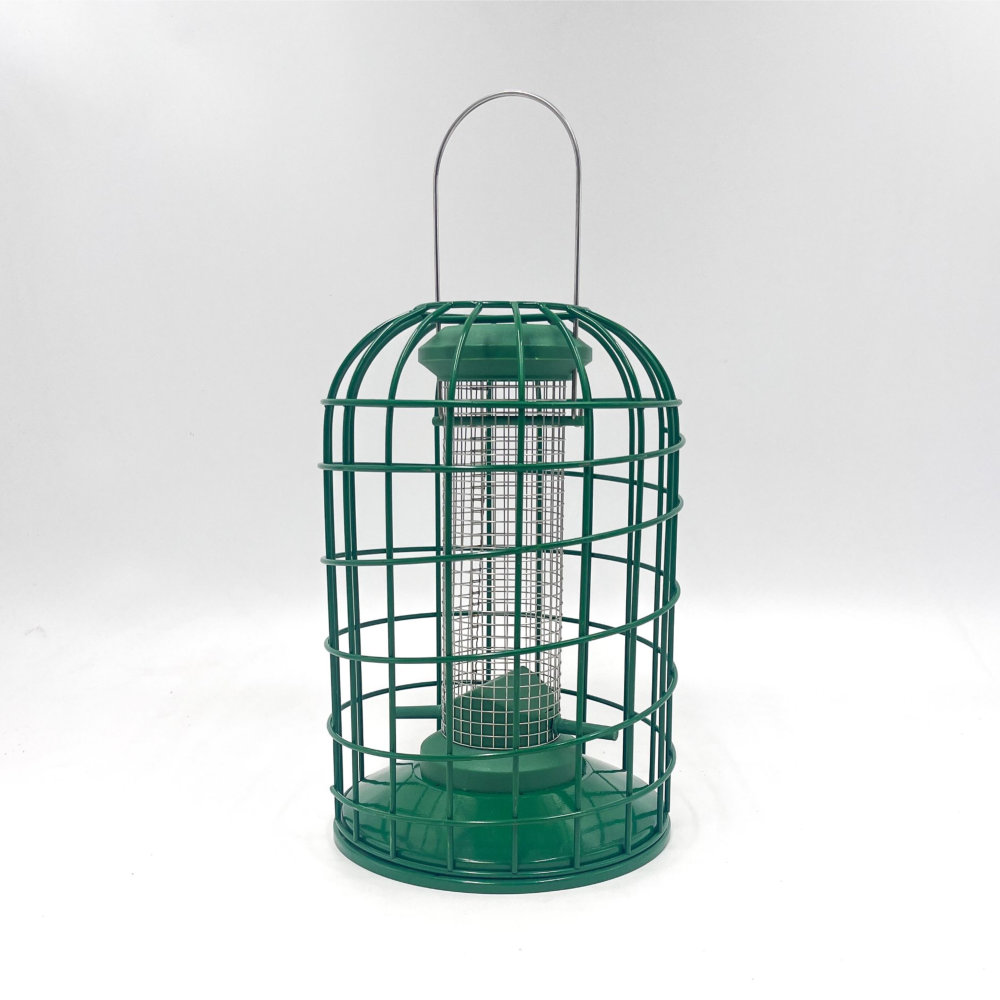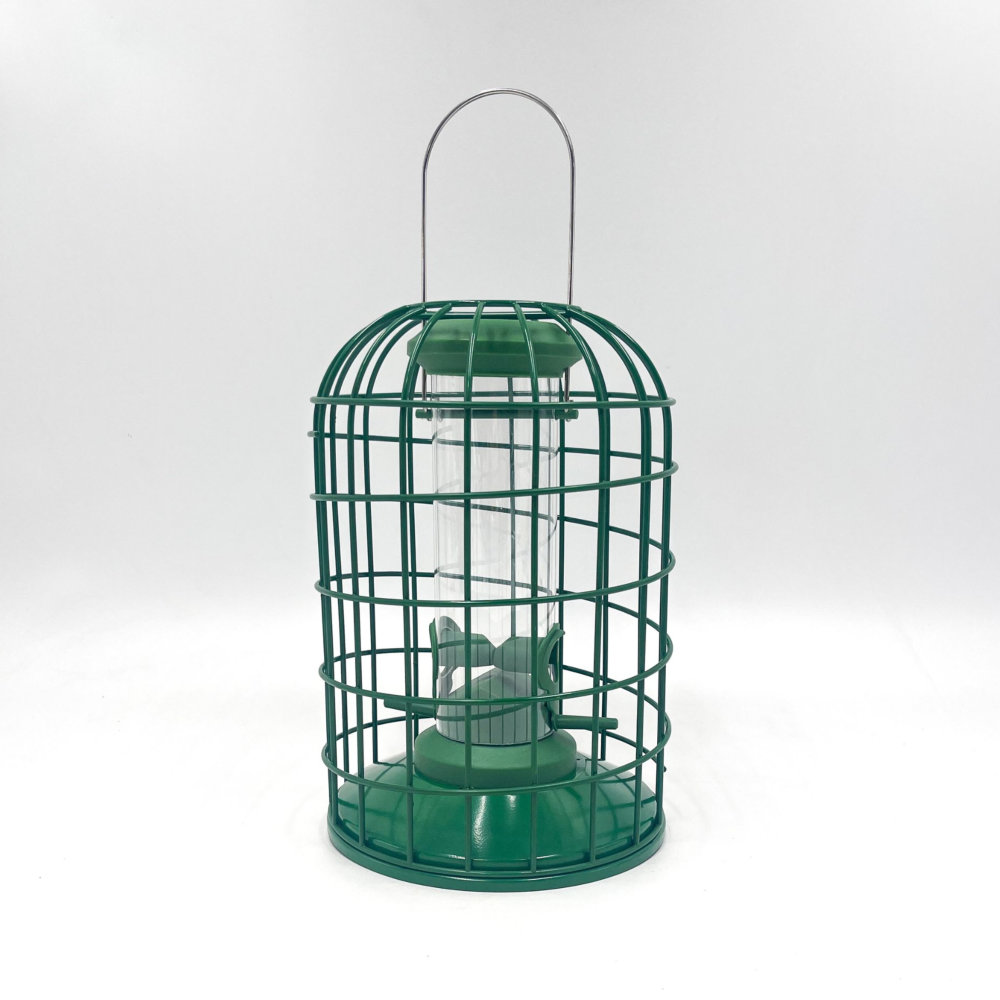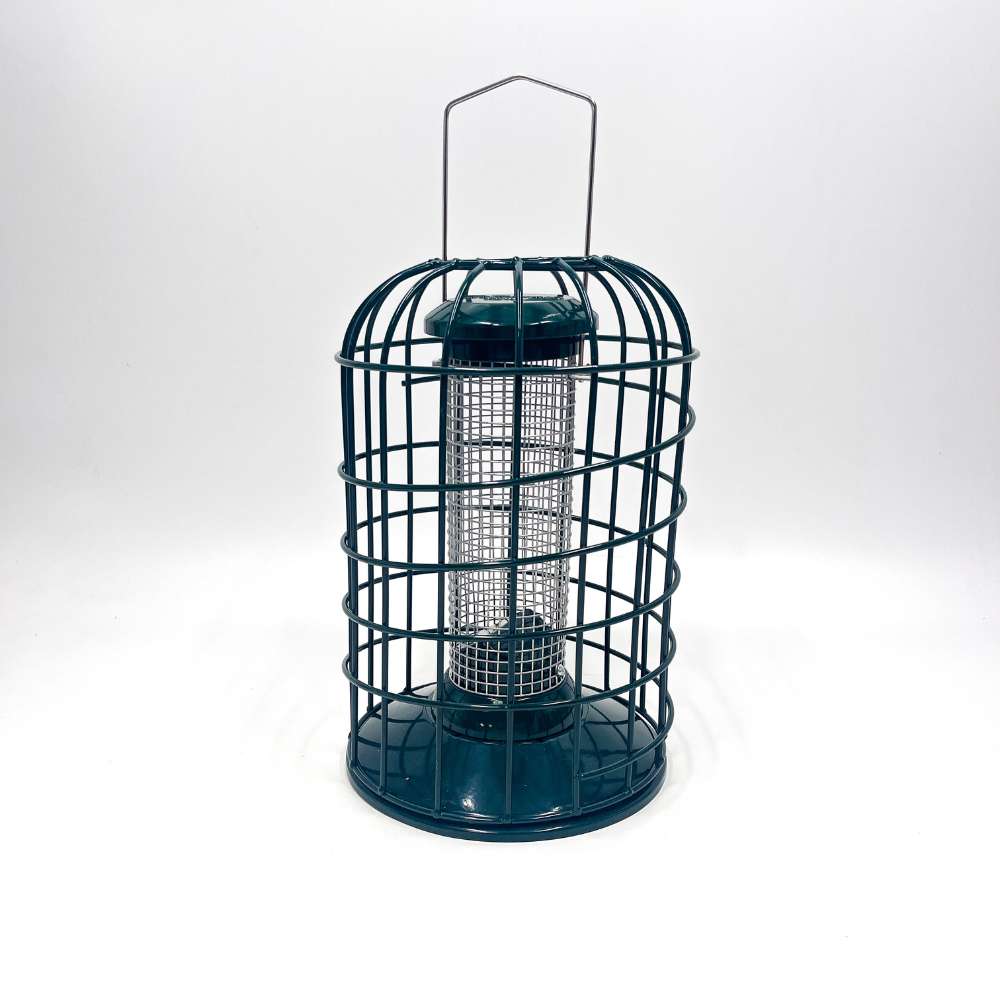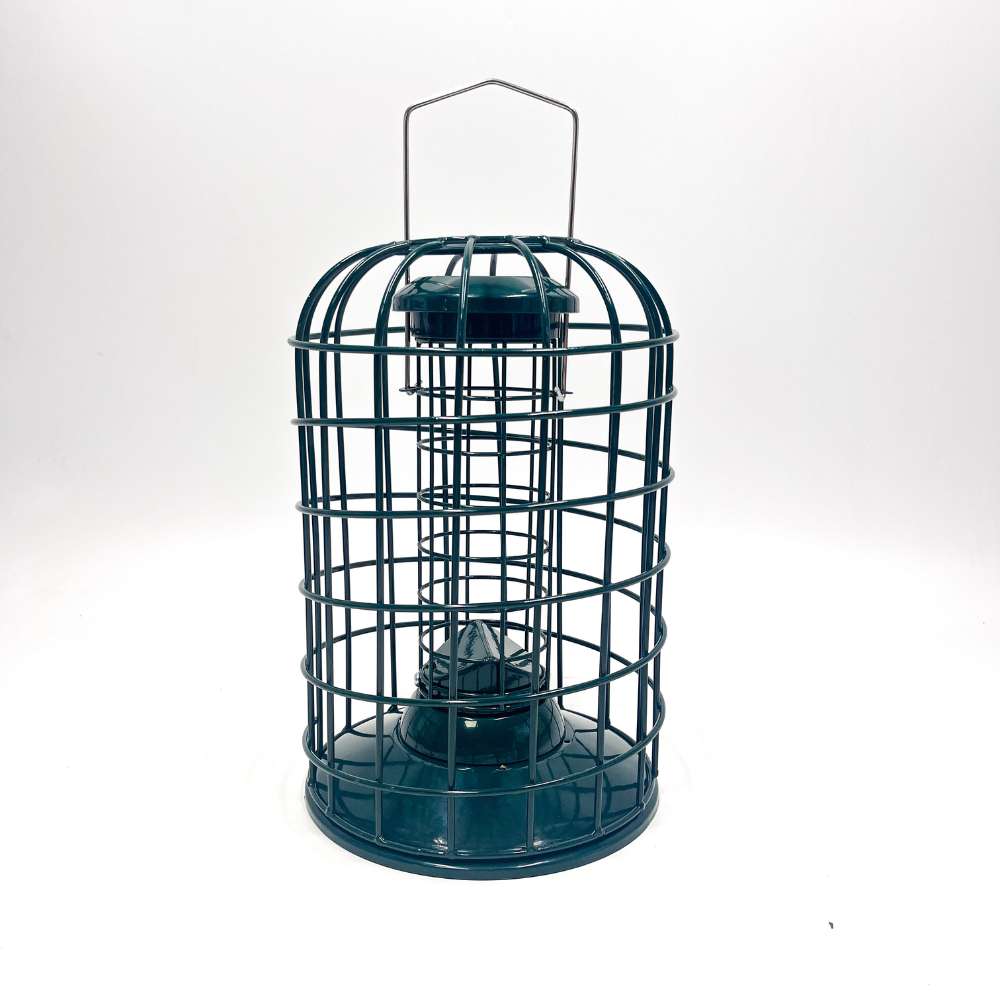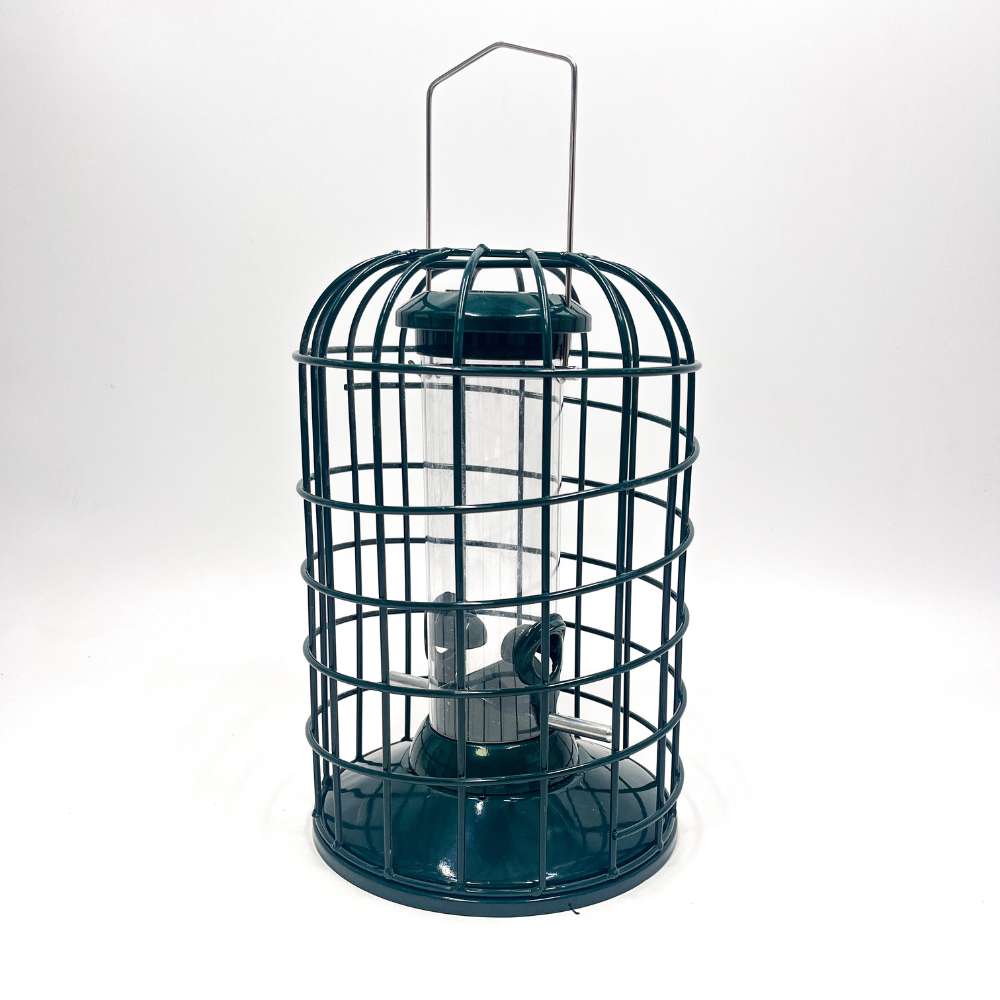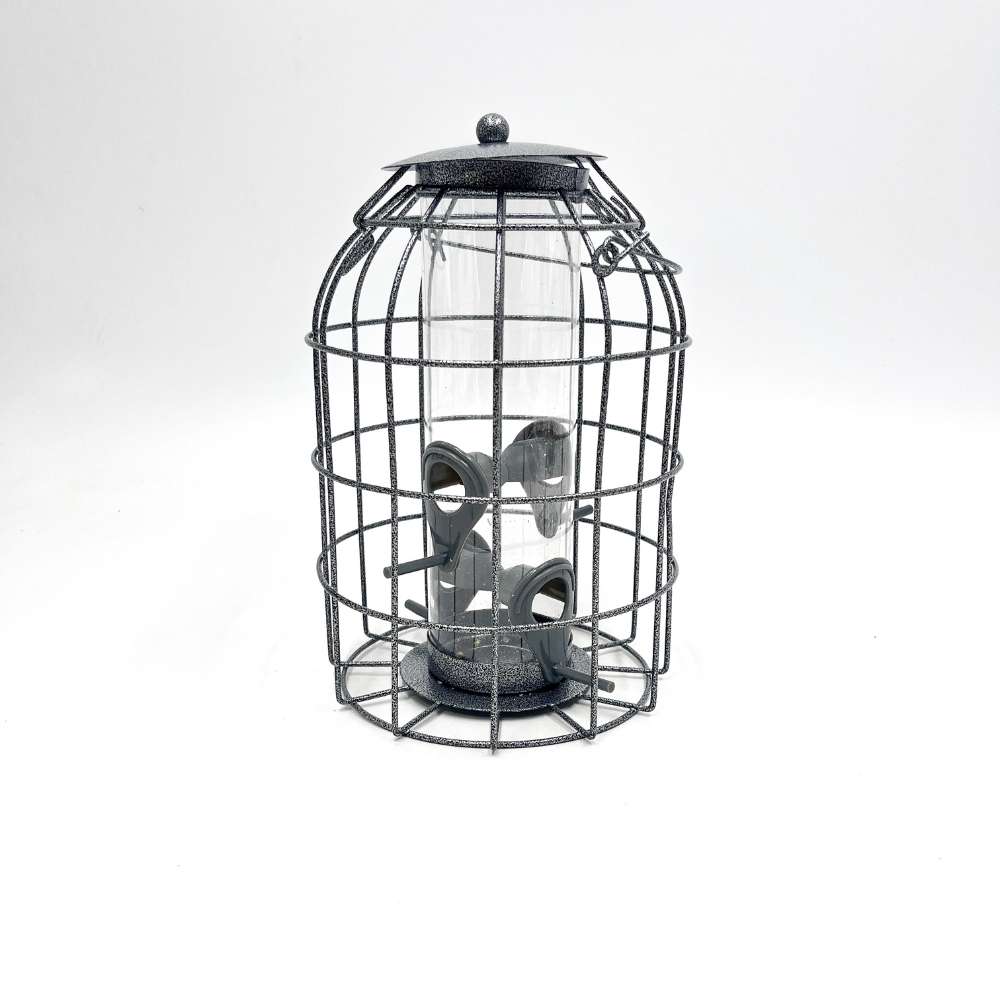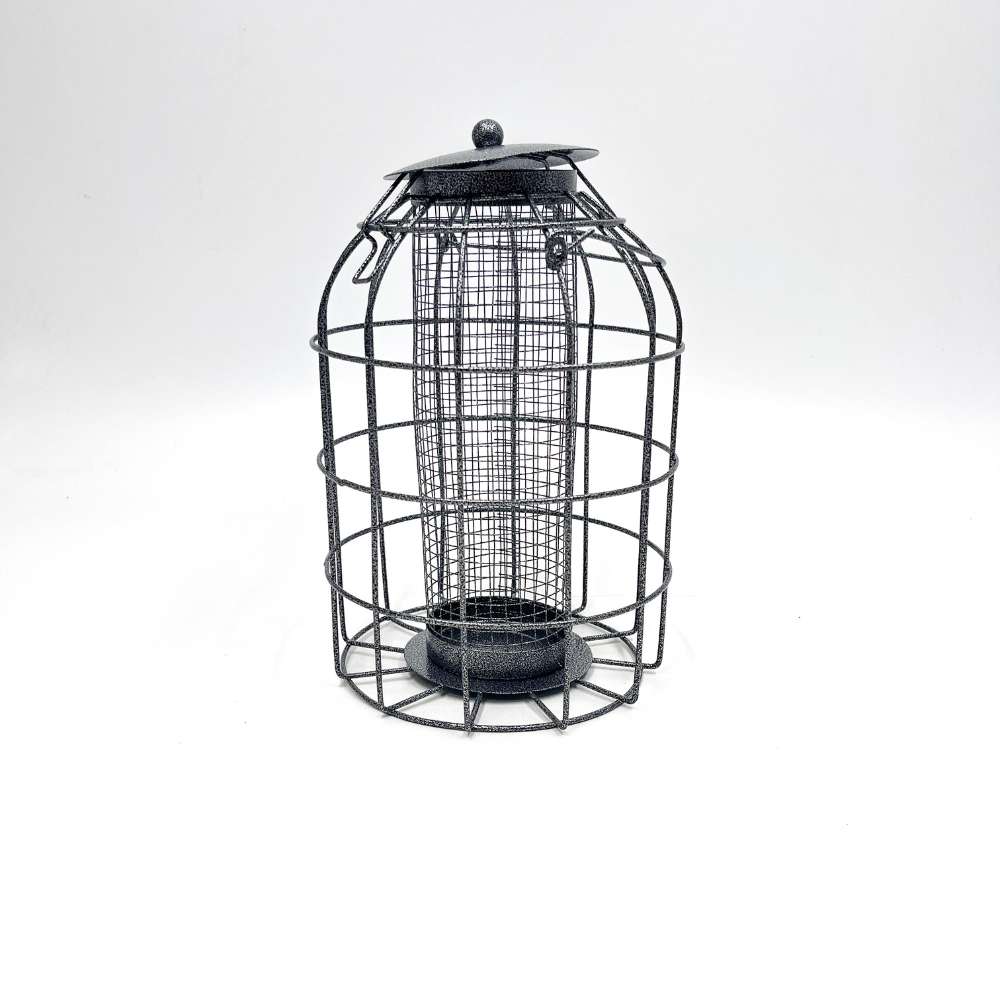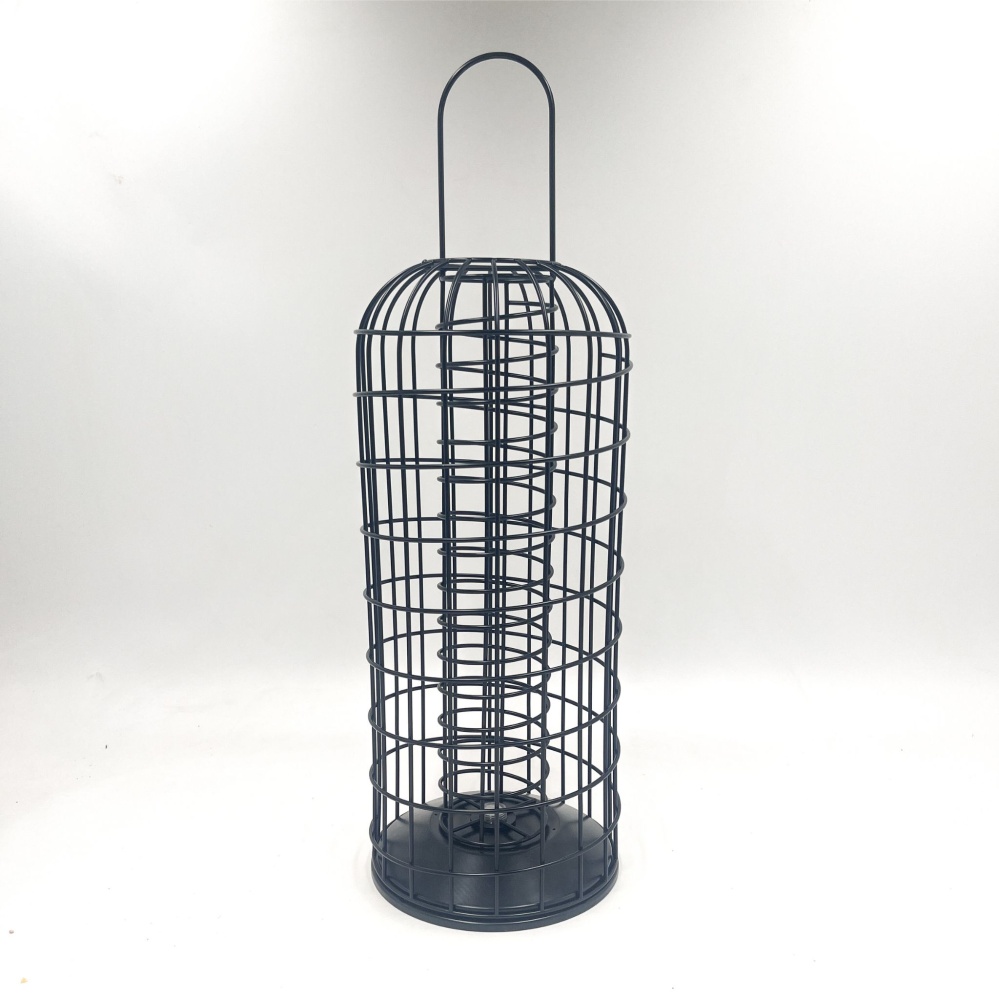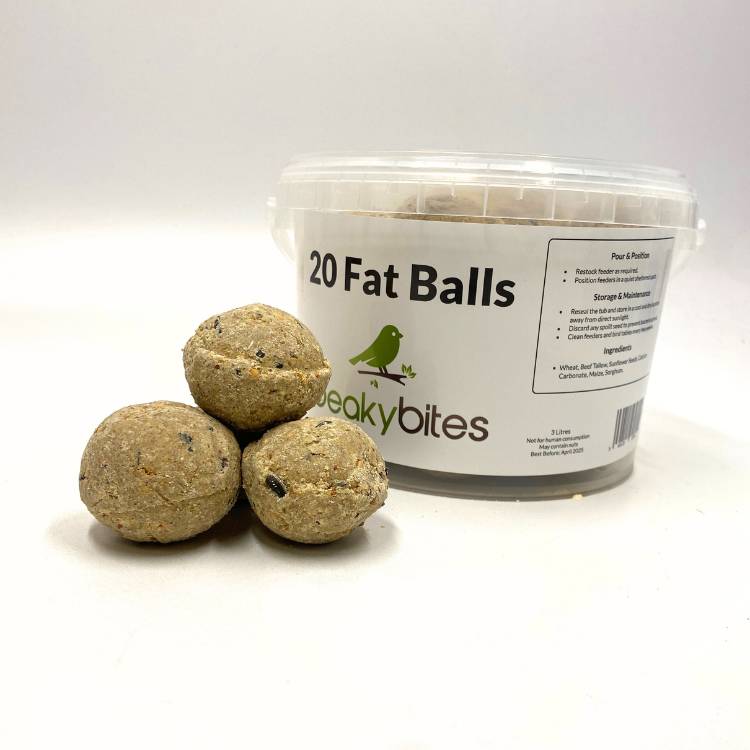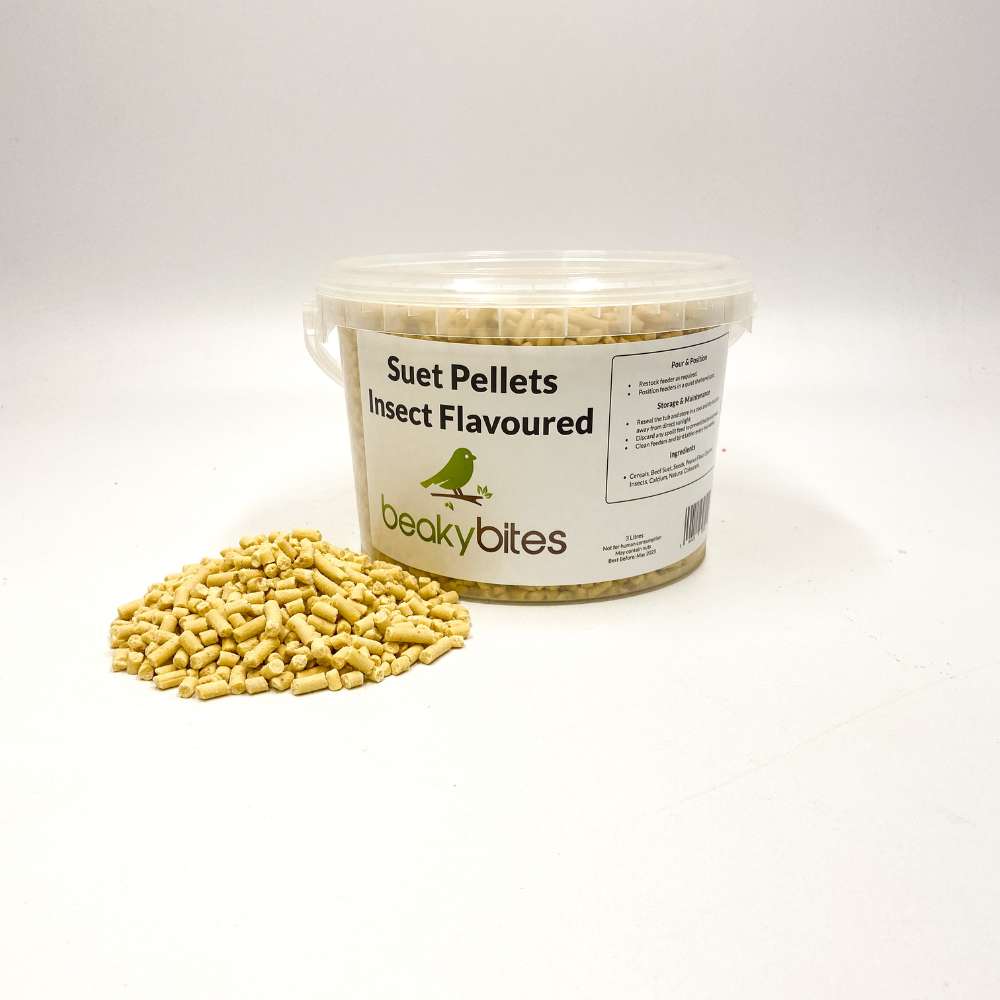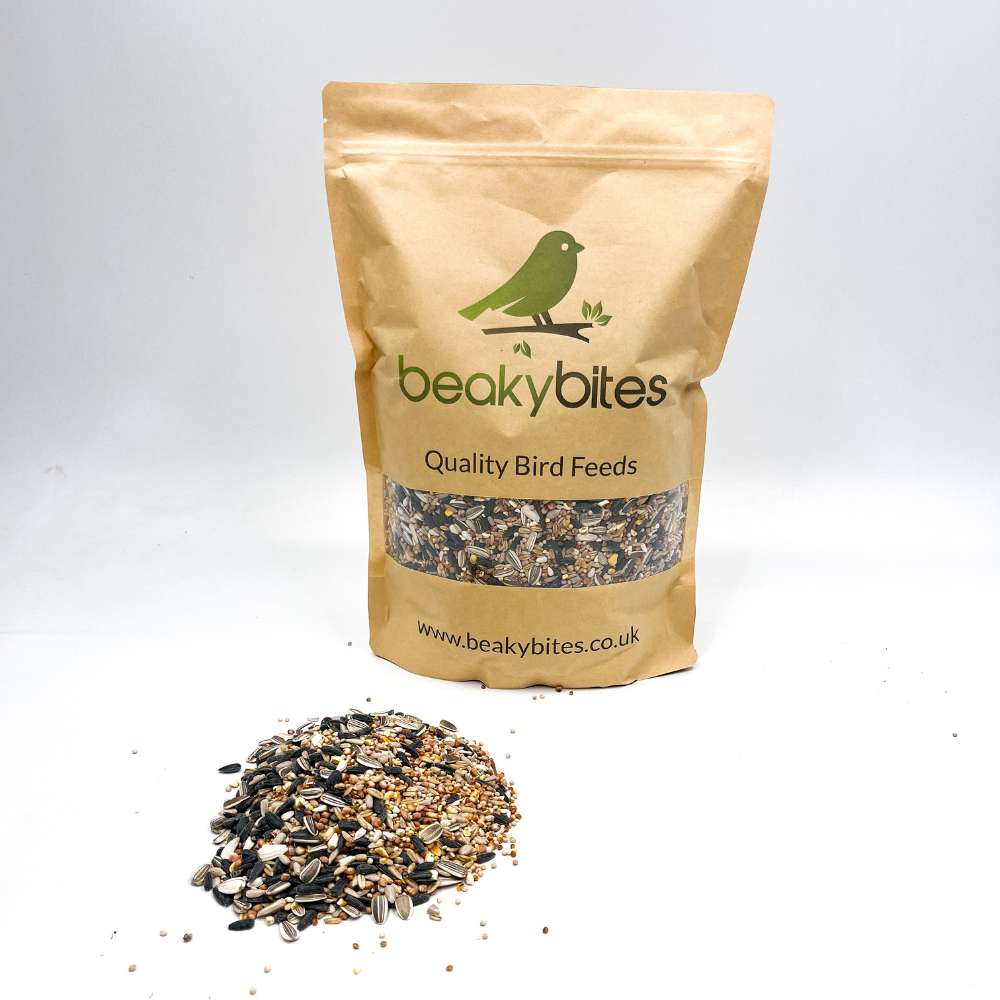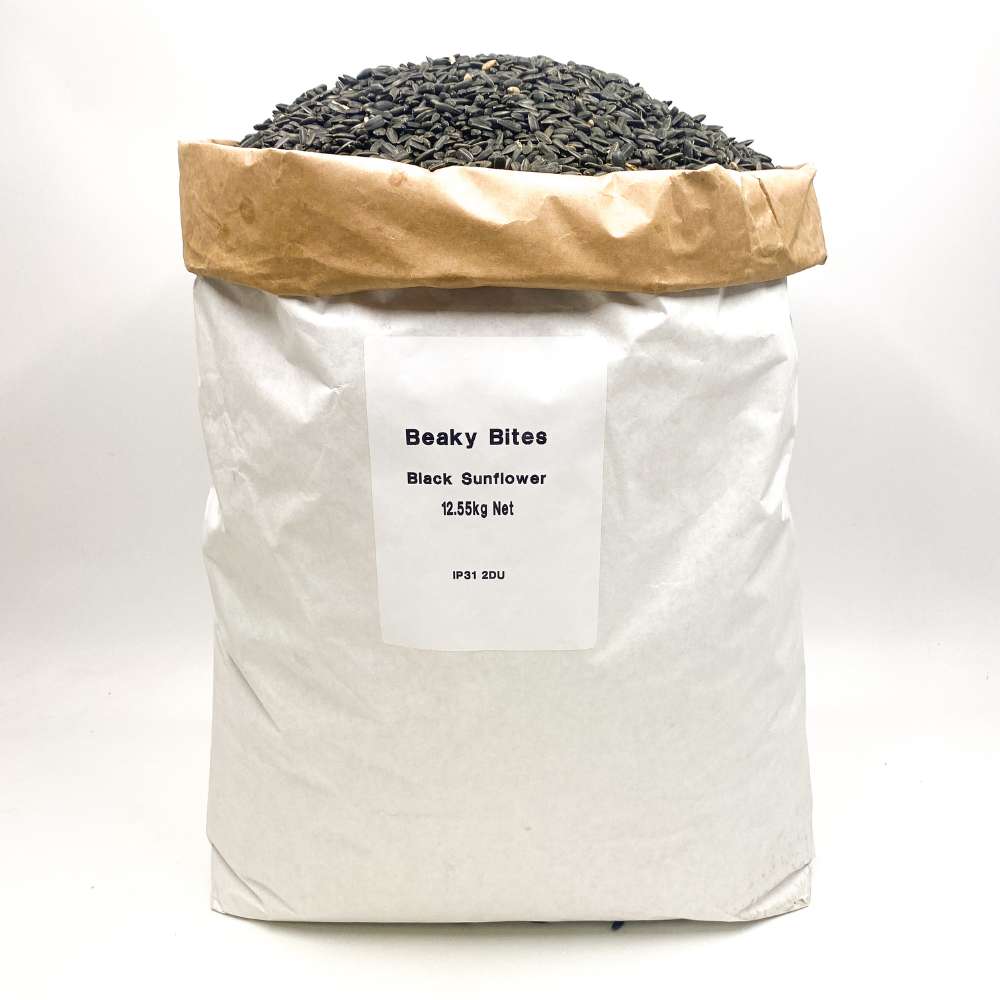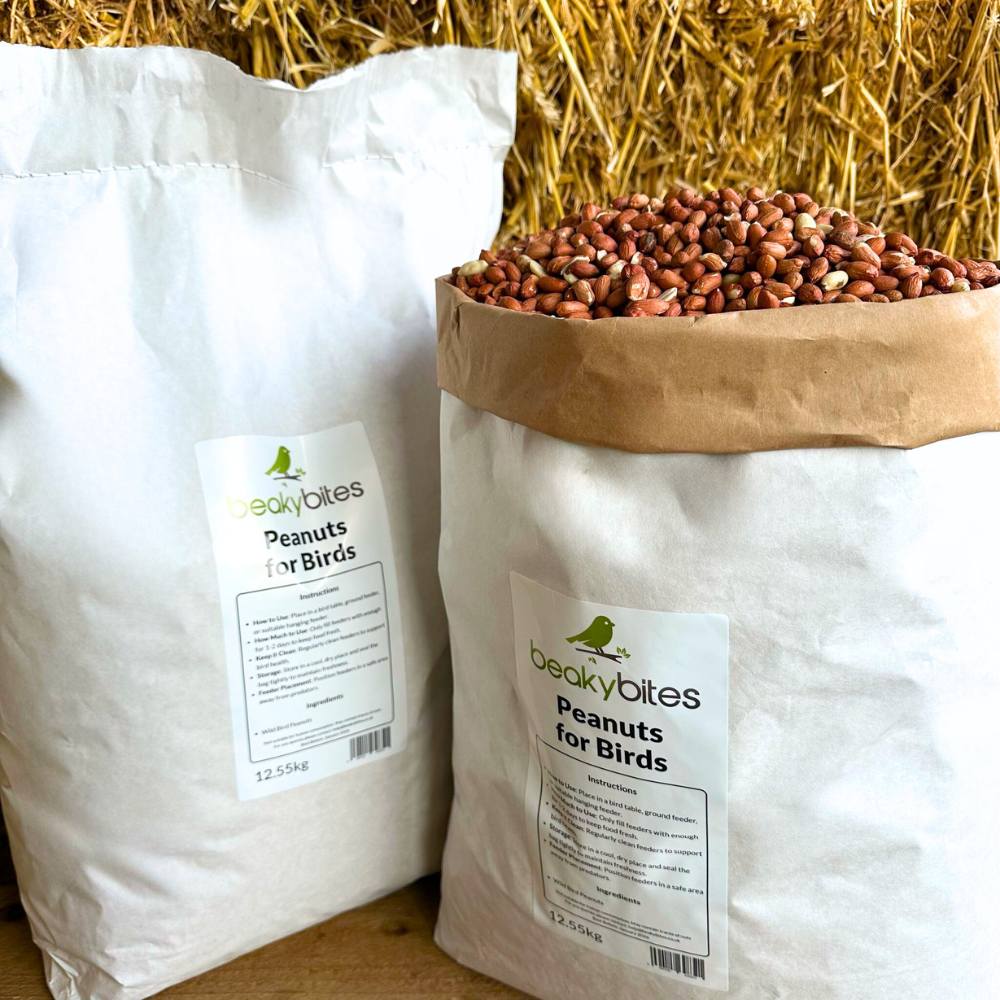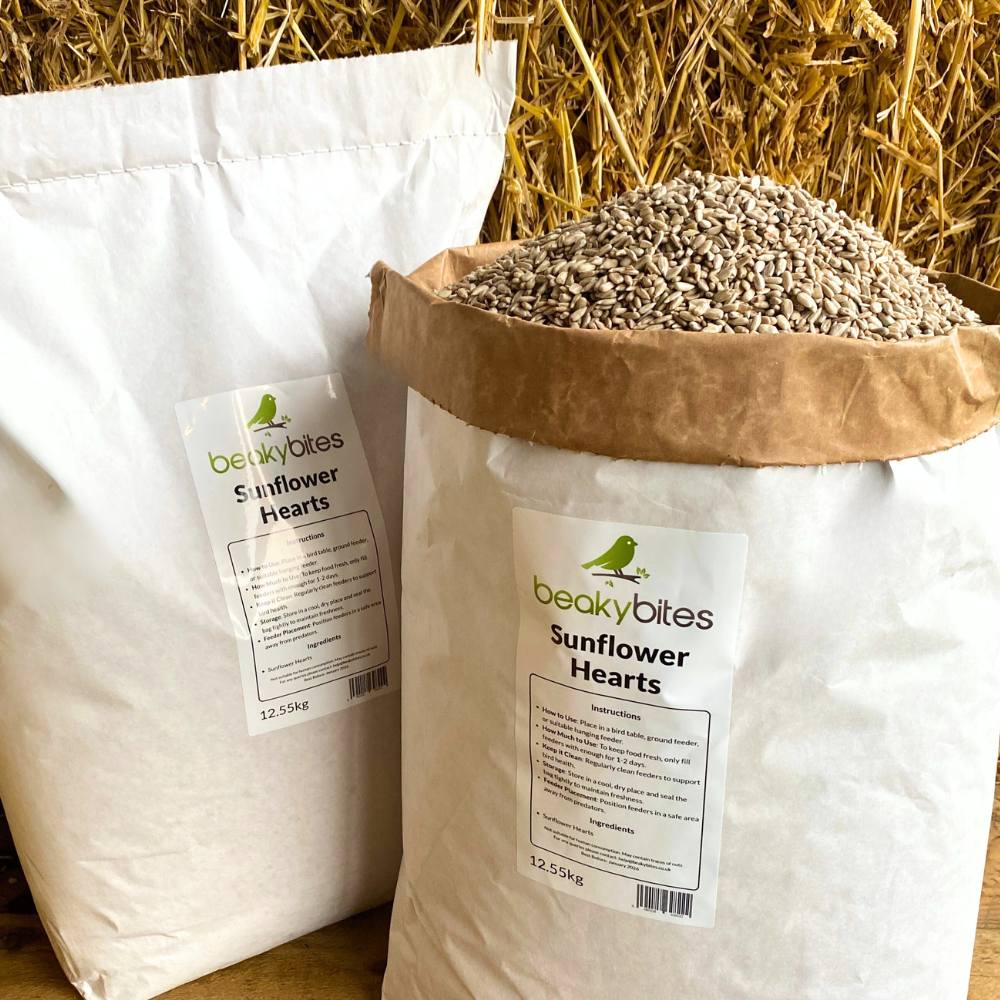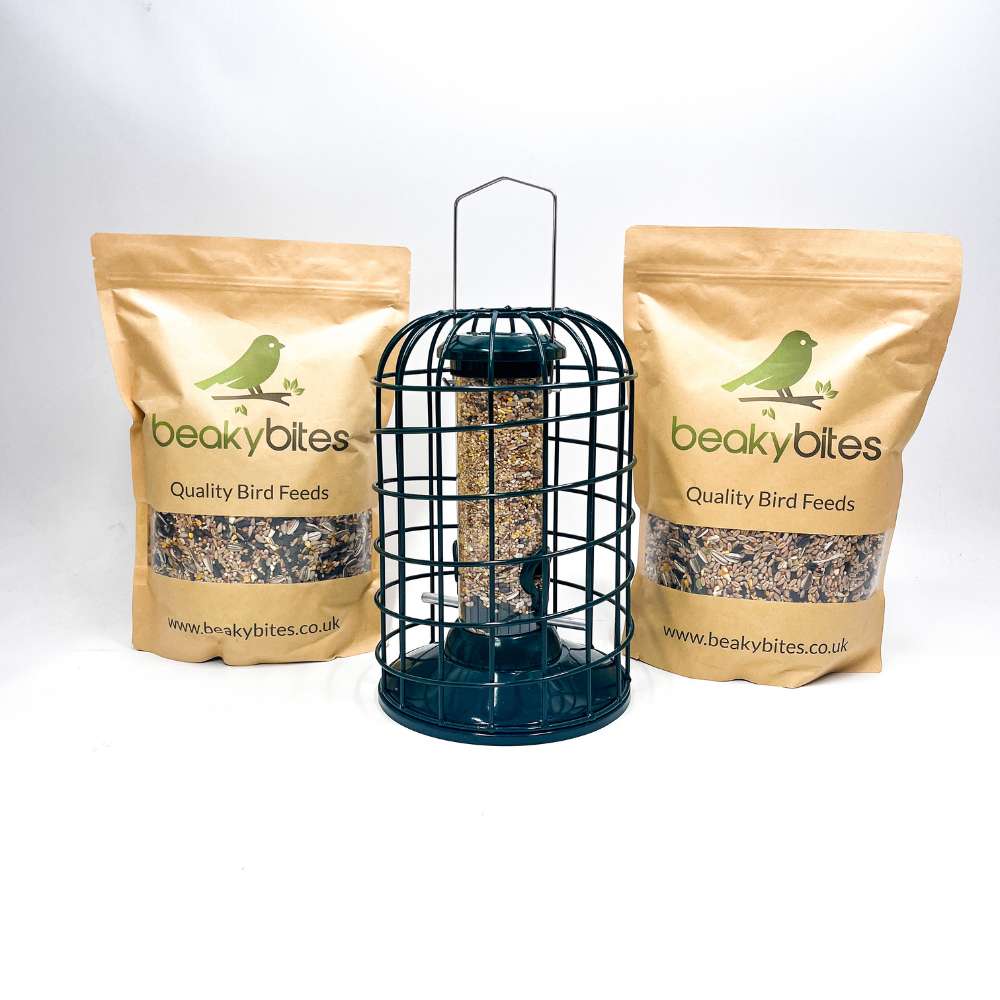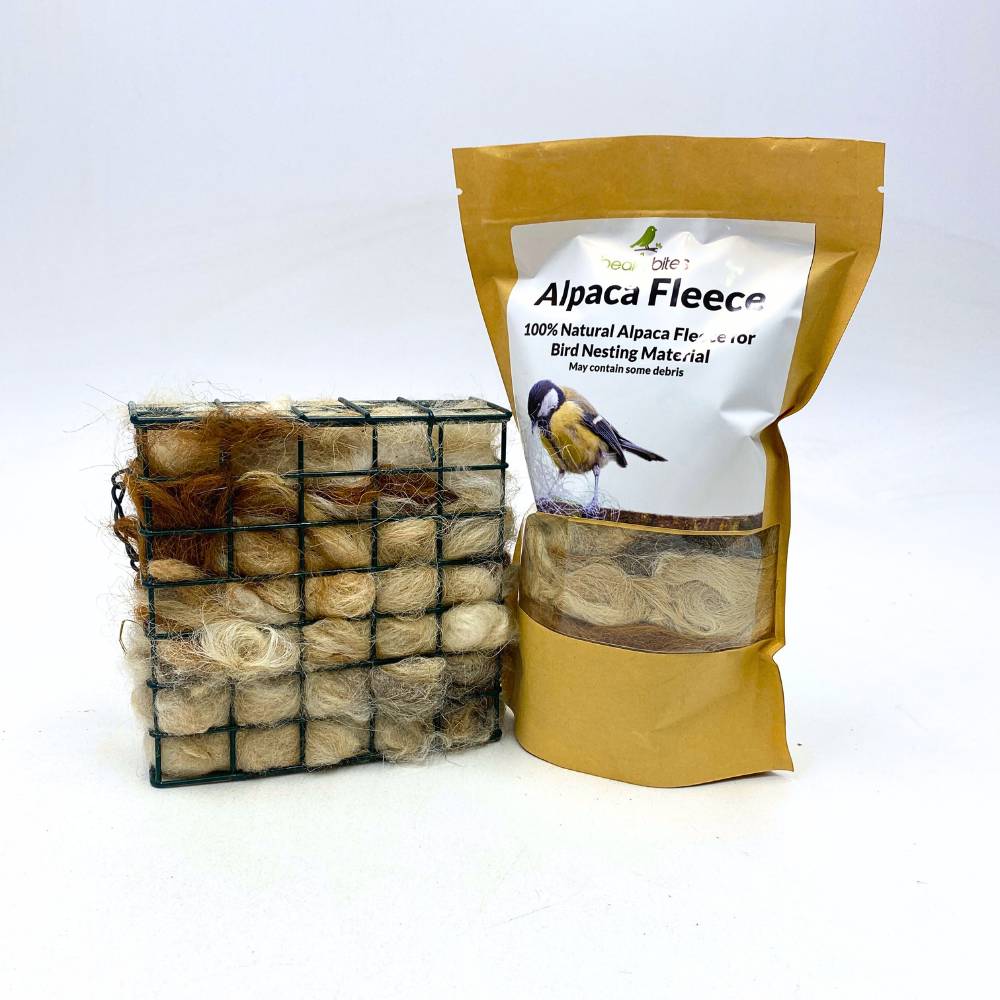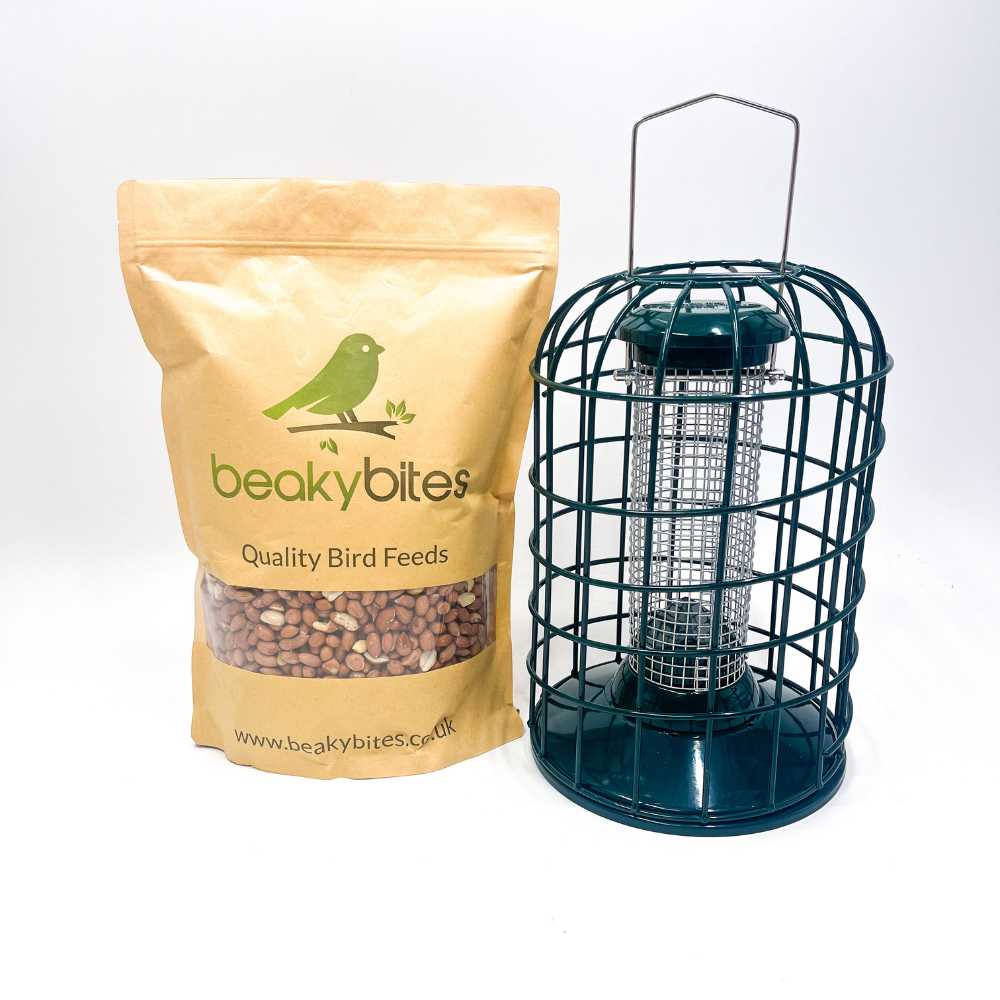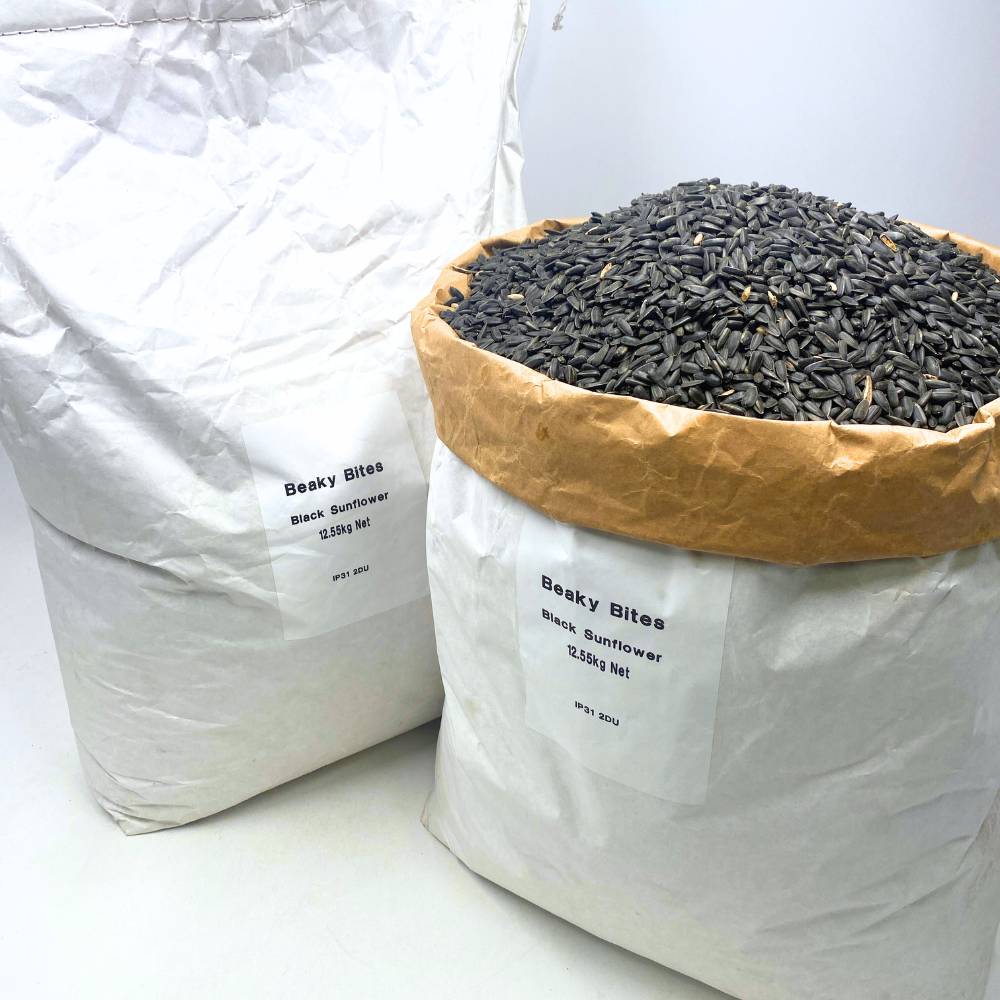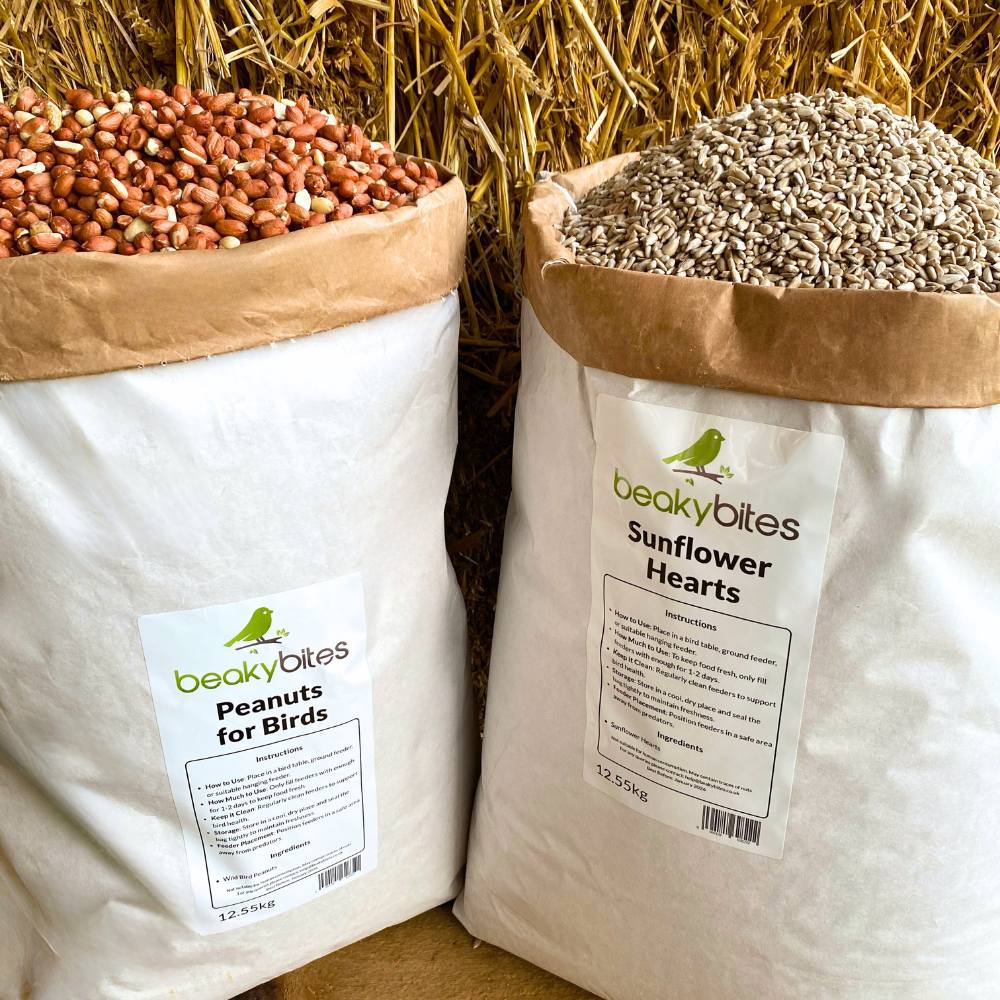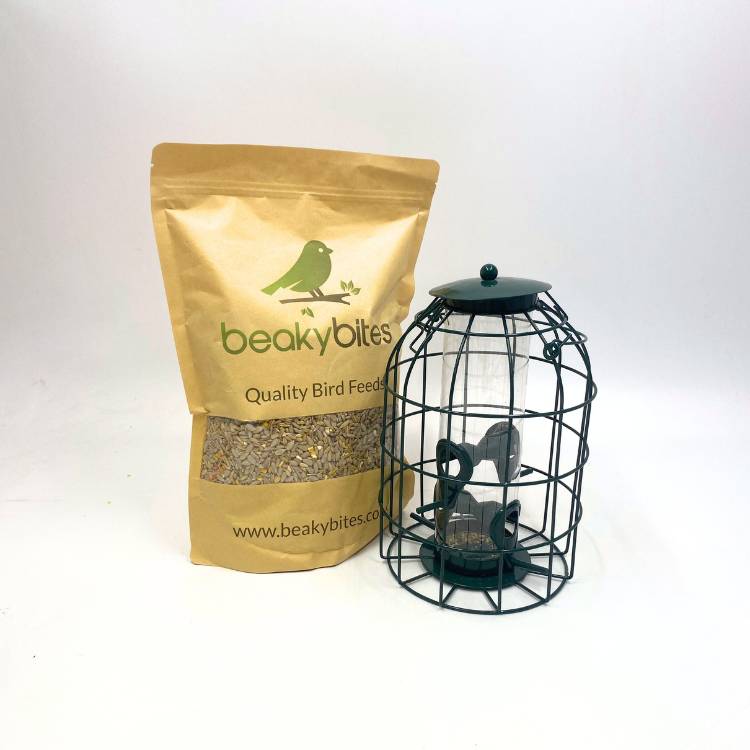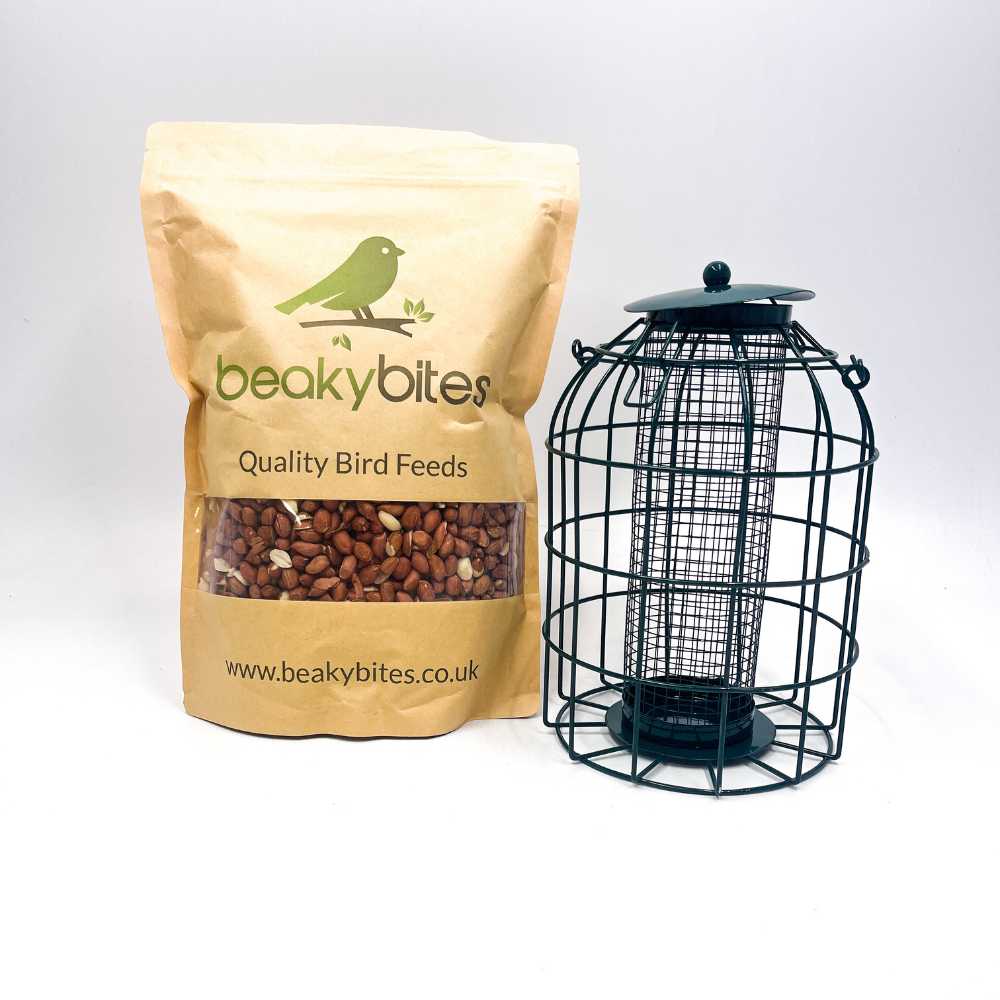The Beginners Guide to Feeding Garden Birds
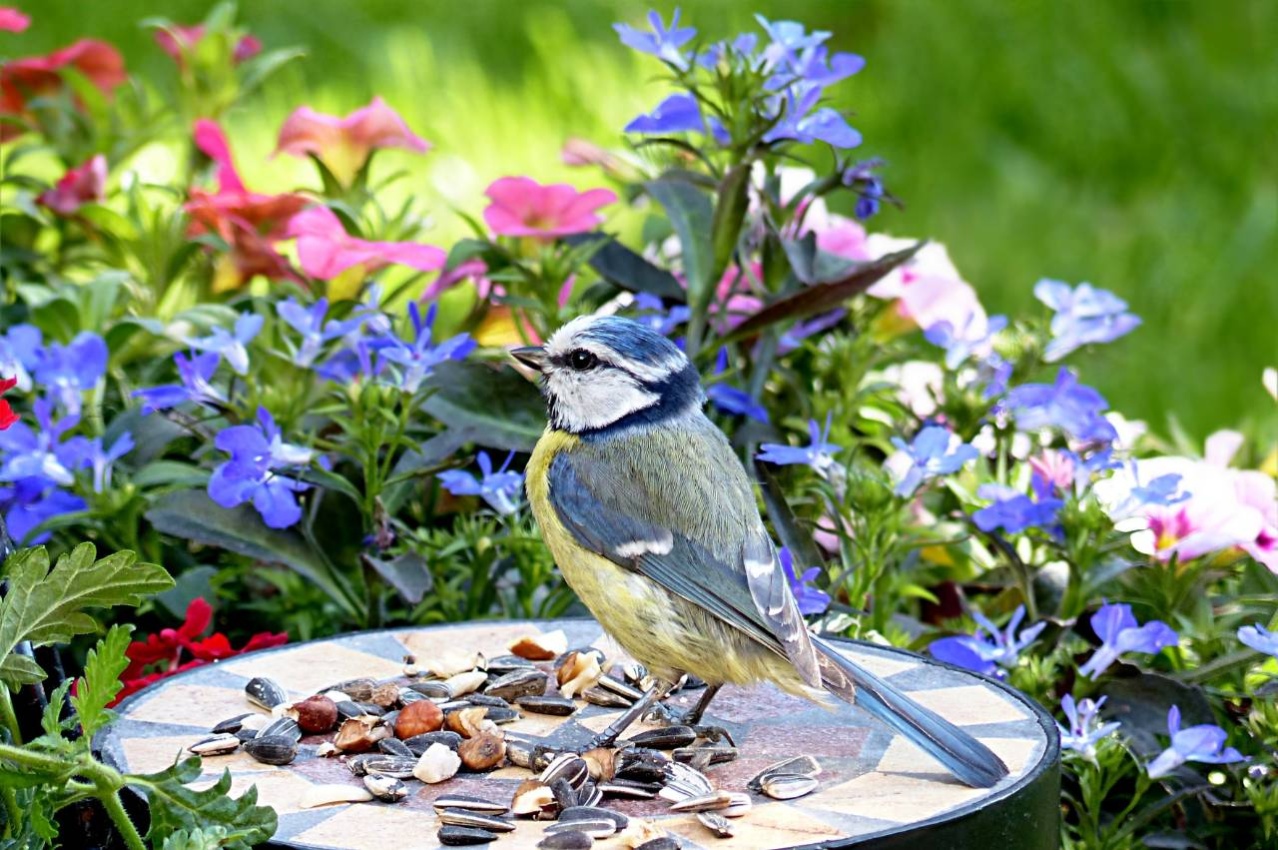
Do you want to start feeding garden birds but don't know where to begin? This beginner's guide is here to help! We'll walk you through everything you need to know, from choosing the best foods, feeder types, and placement tips for attracting and nourishing your feathered visitors. By the end, you'll be well on your way to creating a bird friendly oasis right in your garden.
What we'll cover
- Variety of Foods: Offer seed mixes, peanuts, mealworms, and suet to attract a range of bird species and meet their nutritional needs.
- Feeder Placement: Position feeders in elevated, sheltered spots to protect birds from predators and bad weather, and ensure they are easy to refill and clean.
- Seasonal Feeding: Adjust your feeding strategy with the seasons. Provide high energy foods in winter, protein rich options in spring and summer for breeding birds, and maintain a steady food supply all year round.
- Hygiene and Maintenance: Regularly clean your feeders and replace old food to keep your feathered friends healthy and safe
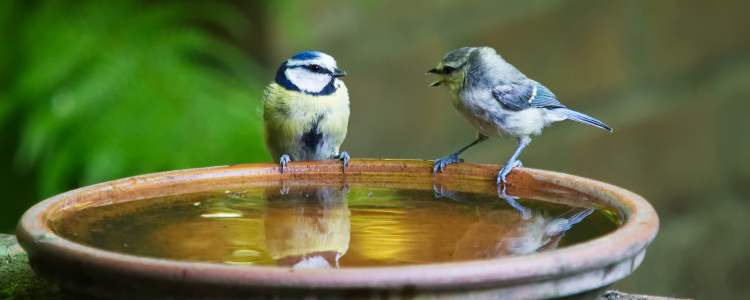
Essential Bird Foods for Beginners
The buffet you set out can significantly influence the variety of wild birds that visit your garden. Straight seeds such as sunflower hearts, rich in oil and nutrients, are a favourite among many bird species due to their high energy content and ease of consumption. Peanuts are another all time favourite, but it's important to offer them in rigid mesh feeders to prevent birds from choking on large pieces, specially during nesting seasons.
Dried mealworms and dried calciworms are an excellent source of protein, especially valuable during the breeding season when birds need extra energy to raise their young fledglings. These wriggly treats are loved by robins, blue tits, and other insect eating birds all year round as well.
Suet products are packed with calories and provide the high energy necessary for birds to survive the colder months. These are particularly favoured by starlings, woodpeckers, and nuthatches. These products come in balls, blocks and pellet form and are a staple in most bird feeding gardens.
Finally there are a full range of seed mixes offering a balanced diet that caters for a wide variety of birds, making them an ideal choice for beginners. They usually contain a blend of seeds, grains, and sometimes dried fruits, catering to different birds preferences. These mixes are the most versatile, offering you a full range of feed options for your visitors.
While you don't need to offer every type of bird feed, having a variety is key to attracting different species to your garden. Changing up the variety of food ensures that you'll see a diverse range of birds throughout the year.
Types of Bird Feeders
With the menu decided, the next step is choosing the perfect setting to feed your garden birds. Let's explore the main types: hanging feeders, bird tables, and ground feeders.
Hanging feeders are a popular choice for many garden bird enthusiasts. These feeders sway gently in the breeze, attracting small, agile birds like finches, tits, and sparrows and can be hung from a variety of positions, such as feeding station to tree branches. They can come in different styles to hold various feeds such as peanuts, seeds, or fat balls, keeping food off the ground and out of reach of pests and pets. However, their suspended nature means they may not be as stable in very windy conditions, sometimes loosing feed.
Bird tables provide a versatile feeding station that suits a wide range of birds, from sparrows to thrush and with a variety of designs can become a beautiful addition to your garden backdrop. These elevated platforms keep food dry and off the ground, making them less accessible to pests. Bird tables offer an open feeding space where multiple birds can dine simultaneously, creating a lively and entertaining spot in your garden. One downside is that bird tables can sometimes become messy, requiring regular cleaning to maintain hygiene.
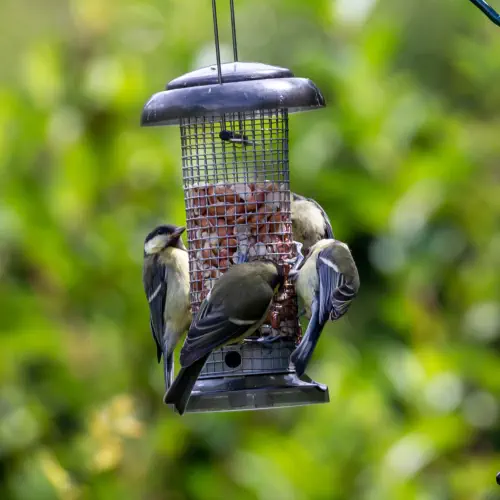
Ground feeders cater to the foraging habits of birds like robins, blackbirds, and dunnocks. These feeders are placed directly on the ground, mimicking a natural feeding environment. Ground feeders are perfect for attracting a variety of ground feeding birds that may not visit hanging feeders or bird tables. However, they can be more susceptible to attracting unwanted visitors, such as rodents, and should be placed in a safe location away from potential predators.
While all the above feeding methods are excellent for attracting a variety of garden birds, they can also invite larger birds and squirrels to consume the free meal before the smaller birds get a chance.
Squirrel proof bird feeders are a smart solution to this problem. These feeders are designed to protect your bird food, providing a safe and secure place for smaller birds to eat in peace. By using caged feeders, you ensure that your feathered friends have consistent access to the nutrition they need, without the competition from larger birds and pesky squirrels.
Where to Place Bird Feeders
The placement of your bird feeders can make or break the dining experience for your winged visitors. Every garden is different, but here are some essential tips:
- Elevate feeders to keep them out of reach of predators and ensure birds have a clear escape route.
- Choose sheltered spots to protect birds from the elements and predators
- Use natural protection like trees and bushes, and place feeders near natural food sources and nesting materials.
- Consider the convenience of refilling and cleaning the feeders.
A quiet corner of the garden, away from the hustle and bustle, creates a peaceful sanctuary where birds can dine undisturbed, and allows you to be surrounded by the joy they bring.
Seasonal Feeding Tips
As the seasons change, so do the dietary needs of garden birds. Adapting your feeding strategy accordingly ensures you provide the most benefit to your feathered friends.
Winter Feeding: birds need extra energy to keep warm in winter. Foods high in fat and calories, like sunflower hearts, peanuts, and suet, are essential. Suet blocks, filled with seeds and fats, are particularly beneficial as they provide quick energy. On particularly cold days, increase the frequency of your feedings to ensure birds have constant access to food. And beware of the weather, make sure your feed doesn't get spoilt and feeding areas are still maintained.
Spring and Summer Feeding: the focus shifts to supporting birds through breeding, fledgling, and moulting seasons. High protein foods like dried mealworms, niger seeds, and seed mixes are crucial for chick growth and feather regeneration. Avoid whole peanuts unless fed in a mesh container to prevent choking hazards for small fledglings. As natural foraging becomes more abundant, giving that extra boost of feed in your garden will help attract the small birds in.
Autumn Feeding: is a time of preparation as birds ready themselves for winter. Continue providing a regular supply of food and water as natural sources begin to dwindle. Berries, nuts, and seeds are abundant initially, but as the season progresses, your feeders will become increasingly popular, offering a consistent food source for birds preparing for the colder months. Ensure your feeders are constantly stocked and birds will remember their favourite spots for a tasty treat.

Keeping Feeders Clean
Feeding birds is fun but also a responsibility, and maintaining clean feeders is crucial to prevent disease. Clean your feeders every two weeks with soapy water or a weak bleach solution to kill any bacteria. Make sure to rinse the feeder thoroughly, and let them dry completely before refilling.
Its important to only fill feeders with enough food to last a couple of days to prevent spoilage and ensure a healthy feeding environment for your feathered friends.
Unfortunately bird droppings are going to happen, so make to clean these up to stop any contamination.
For more information go have a read of our other blog post around cleaning your bird feeders, with a how to guide.
Other Bits to Consider
- Natural food sources: take a look at your garden and consider how a few different plants may add free natural feed and shelter for your garden birds.
- Fresh water: is crucial alongside your bird feed, to give them that full balanced diet.
- Bird boxes: are a great way to support your garden birds as well as see them through their full life cycle and help them at each step.
- Enjoyment: don't forget its fun! Sit back, watch and listen.
.jpg)
Summary
Feeding garden birds is a rewarding past time that helps support local wildlife. By choosing the right foods, feeders, and placement, and maintaining a clean feeding environment, you can attract a diverse range of birds to your garden. Remember to adjust your feeding strategy with the seasons and take steps to prevent spoilage and disease. With these tips, you are well on your way to creating a bird friendly garden. Take a look at our other blogs to dive deeper into the world of bird feeding.
Frequently Asked Questions
What are the best types of food to attract a variety of garden birds?
- Answer: Sunflower hearts, peanuts, mealworms, and suet attract a wide variety of garden birds with their high energy and nutritional content.
How often should I clean my bird feeders and bird tables?
- Answer: Clean feeders and tables every two weeks to prevent disease, and increase to weekly cleanings in warmer months.
How can I attract specific bird species to my garden?
- Answer: Do some research and tailor your food and feeder choices, like offering peanuts for tits, mealworms for robins, and niger seeds for goldfinches.
What time of year should I start feeding garden birds?
- Answer: Feed garden birds year-round, with extra emphasis during winter and early spring for their energy and breeding needs.
How can I ensure the bird food stays fresh and doesn't spoil?
- Answer: Store bird food in a cool, dry place, use resealable containers, and only fill feeders with enough food to last a few days.

